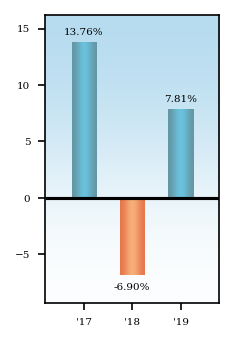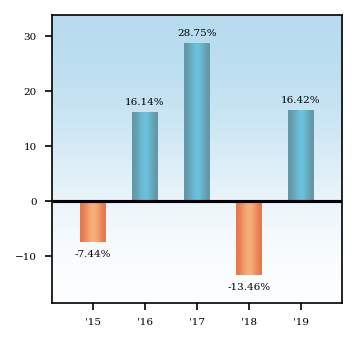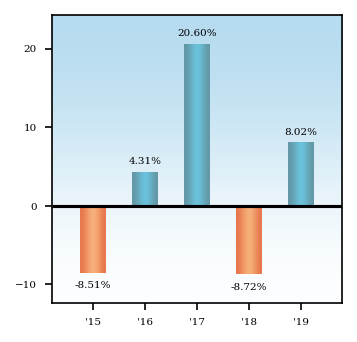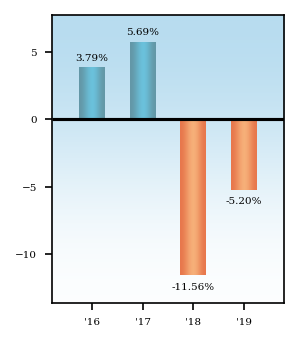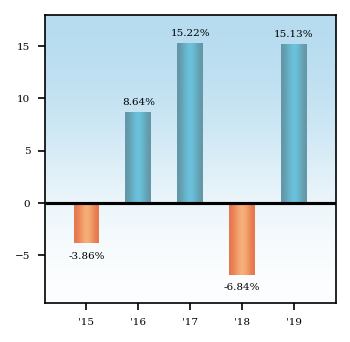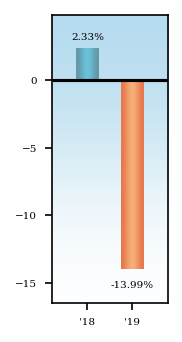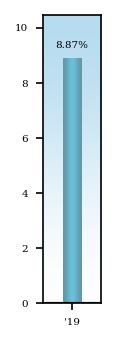Total | ||||||||||||||||||||||||||||||
|---|---|---|---|---|---|---|---|---|---|---|---|---|---|---|---|---|---|---|---|---|---|---|---|---|---|---|---|---|---|---|
| Cambria Shareholder Yield ETF | ||||||||||||||||||||||||||||||
| Cambria Shareholder Yield ETF | ||||||||||||||||||||||||||||||
| INVESTMENT OBJECTIVE | ||||||||||||||||||||||||||||||
The Fund seeks income and capital appreciation. | ||||||||||||||||||||||||||||||
| FEES AND EXPENSES | ||||||||||||||||||||||||||||||
This table describes the fees and expenses that you may pay if you buy, hold and sell Shares. You may pay other fees, such as brokerage commissions and other fees to financial intermediaries, which are not reflected in the table and example below. | ||||||||||||||||||||||||||||||
| ANNUAL FUND OPERATING EXPENSES (EXPENSES THAT YOU PAY EACH YEAR AS A PERCENTAGE OF THE VALUE OF YOUR INVESTMENT) | ||||||||||||||||||||||||||||||
| ||||||||||||||||||||||||||||||
| EXAMPLE | ||||||||||||||||||||||||||||||
The following example is intended to help you compare the cost of investing in the Fund with the cost of investing in other funds. The example assumes that you invest $10,000 in the Fund for the time periods indicated and then redeem all of your Shares at the end of those periods. The example also assumes that the Fund provides a return of 5% a year and that the operating expenses remain the same. The example does not reflect any brokerage commissions that you may pay on purchases and sales of Shares. Although your actual costs may be higher or lower, based on these assumptions, your costs would be: | ||||||||||||||||||||||||||||||
| ||||||||||||||||||||||||||||||
| PORTFOLIO TURNOVER | ||||||||||||||||||||||||||||||
The Fund may pay transaction costs, including commissions, when it buys and sells securities (or "turns over" its portfolio). A higher portfolio turnover rate may indicate higher transaction costs and may result in higher taxes when Shares are held in a taxable account. These costs, which are not reflected in the annual fund operating expenses or in the example, affect the Fund's performance. For the fiscal year ended April 30, 2020, the Fund's portfolio turnover rate was 30% of the average value of its portfolio. | ||||||||||||||||||||||||||||||
| PRINCIPAL INVESTMENT STRATEGIES | ||||||||||||||||||||||||||||||
The Fund is actively managed and seeks to achieve its investment objective by investing, under normal market conditions, at least 80% of its total assets in equity securities, including common stock, issued by U.S.-based publicly listed companies that provide high "shareholder yield." The Fund's investment adviser, Cambria Investment Management, L.P. ("Cambria" or the "Adviser"), defines "shareholder yield" as the totality of returns realized by an investor from a company's cash payments for dividends, buybacks and debt paydowns. For the purposes of this strategy, Cambria calculates a company's shareholder yield by considering the following characteristics: (i) dividend payments to shareholders, (ii) return of capital in the form of share buybacks (i.e., a company's repurchase of its own shares from the marketplace, which, in turn, reduces the number of outstanding shares for continuing shareholders or generates proceeds for existing shareholders), and (iii) paydown of a company's debt (i.e., reducing a company's outstanding debt). Cambria believes that, while any one of these measures of a company's cash flows, in isolation, is inadequate to determine the attractiveness of its equity securities, considered together these measures have the potential to result in the construction of a portfolio of companies with higher potential for income and capital appreciation. Utilizing its own quantitative model, Cambria selects the top 20% of stocks in the initial universe of U.S.-based, publicly listed companies based on their shareholder yield, as measured by dividend payments and net share buybacks. Cambria considers an issuer to be U.S.-based if it is domiciled, incorporated or has substantial business activity in the United States and the primary equity security of such issuer is listed on a major U.S. stock exchange. Cambria's quantitative algorithm then factors in the remaining stocks' debt paydowns and applies a number of value metrics to create a composite, including metrics such as, but not limited to, price-to-book (P/B) ratio, price-to-sales (P/S) ratio, price-to-earnings (P/E) ratio, price-to-free cash-flow (P/FCF or P/CF) ratio, and enterprise multiple (EV/EBITDA). Cambria then selects the top 100 stocks for inclusion in the Fund's portfolio that exhibit, in the aggregate, the best combination of shareholder yield characteristics and value metrics. Although Cambria seeks to weight these stocks equally in the Fund's portfolio, security weights may fluctuate in response to market conditions and investment opportunities. Although the Fund generally expects to invest in companies with larger market capitalizations, the Fund may invest in small- and mid-capitalization companies. As of July 31, 2020, the Fund had significant exposure to companies in the consumer discretionary and financial services sectors. The Fund may sell a security when Cambria believes that the security is overvalued or better investment opportunities are available, to invest in cash and cash equivalents, or to meet redemptions. Cambria expects to adjust the Fund's holdings periodically to meet the investment criteria and target allocations (e.g., security weights) established by the Fund's quantitative algorithm. | ||||||||||||||||||||||||||||||
| PRINCIPAL RISKS | ||||||||||||||||||||||||||||||
An investment in the Fund involves risk. Each risk summarized below is considered a "principal risk" of investing in the Fund, regardless of the order in which it appears. The Fund's principal risks are presented in alphabetical order to facilitate investors' ability to identify particular risks and compare them with the risks of other funds. Some or all of these risks may adversely affect the Fund's net asset value per share ("NAV"), trading price, yield, total return, and/or ability to meet its objective. There is no assurance that the Fund will achieve its investment objective. An investor may lose money by investing in the Fund. For more information about the risks of investing in the Fund, see the sections titled "Additional Information About the Funds' Risks" and "Additional Non-Principal Risk Information." Buyback Risk. When a company repurchases its shares from the marketplace through share buybacks, investors may perceive this action to be a reflection of management's belief that company shares are undervalued, but there is no guarantee that the price of a company's stock will increase after the company announces a buyback. Accordingly, share buybacks may not be an accurate predictor of a company's value or future share performance. Cyber Security Risk. The Fund may be susceptible to operational and information security risks resulting from a breach in the Fund's cyber security, including cyber-attacks against the Fund, third-party service providers, market makers, Authorized Participants, or issuers of securities in which the Fund invests. A breach in cyber security, intentional or unintentional, may adversely impact the Fund in many ways, including, but not limited to, disruption of the Fund's operational capacity, loss of proprietary information, theft or corruption of data, denial-of-service attacks on websites or network resources, and the unauthorized release of confidential information. Dividend Paying Security Risk. Securities that pay high dividends as a group can fall out of favor with the market, causing these companies to underperform companies that do not pay high dividends. Also, changes in the dividend policies of companies owned by the Fund and the capital resources available for these companies' dividend payments may adversely affect the Fund. Equity Investing Risk. The values of equity securities could decline generally or could underperform other investments due to factors affecting a specific issuer, market or securities markets generally. Investment Risk. An investment in the Fund is not a deposit of a bank and is not insured or guaranteed by the Federal Deposit Insurance Corporation or any other government agency. When you sell your Shares, they could be worth less than what you paid for them. Large Capitalization Company Risk. The Fund's investments in large capitalization companies may underperform other segments of the market because they may be less responsive to competitive challenges and opportunities and unable to attain high growth rates during periods of economic expansion. Management Risk. The Fund is actively managed using proprietary investment strategies and processes. There can be no guarantee that these strategies and processes will be successful or that the Fund will achieve its investment objective. Market Events Risk. Turbulence in the financial markets, reduced liquidity in the equity markets, and/or the advent of certain economic or political events, including global events such as war, acts of terrorism or a public health crisis, may negatively affect issuers, which could have an adverse effect on the Fund. In addition, there is a risk that policy changes by the U.S. Government, Federal Reserve and/or other government actors, such as increasing interest rates, could cause increased volatility in financial markets and higher levels of Fund redemptions, which could have a negative impact on the Fund. Recent Events. The respiratory illness COVID-19 caused by a novel coronavirus has resulted in a global pandemic and major disruption to economies and markets around the world, including the United States. Financial markets have experienced extreme volatility and severe losses, and trading in many instruments has been disrupted. Liquidity for many instruments has been greatly reduced for periods of time. Some interest rates are very low and in some cases yields are negative. Some sectors of the economy and individual issuers have experienced particularly large losses. These circumstances may continue for an extended period of time, and may continue to affect adversely the value and liquidity of the Fund's investments. Premium-Discount Risk. Shares may trade above (premium) or below (discount) their NAV. The market prices of Shares will generally fluctuate in accordance with changes in NAV as well as the relative supply of, and demand for, Shares on the Exchange. This risk is heightened in times of market volatility or periods of steep market declines. Quantitative Security Selection Risk. Cambria uses quantitative techniques to generate investment decisions and select stocks, and the Fund may not perform as intended if it relies on erroneous or outdated data from one or more third parties. Errors in data used in the quantitative model may occur from time to time and may not be identified and/or corrected before having an adverse impact on the Fund and its shareholders. Secondary Market Trading Risk. Investors buying or selling Shares in the secondary market may pay brokerage commissions, which may be a significant proportional cost for investors seeking to buy or sell relatively small amounts of Shares. In addition, secondary market investors will also incur a bid/ask spread, which varies over time for Shares based on trading volume and market liquidity and is generally higher if Shares have little trading volume and market liquidity. Although the Shares are listed on the Exchange, there can be no assurance that an active or liquid trading market for them will develop or be maintained. In stressed market conditions, the liquidity of Shares may begin to mirror the liquidity of the Fund's underlying portfolio holdings, which can be significantly less liquid than Shares. In addition, trading in Shares on the Exchange may be halted. Sector Risk. To the extent that the Fund invests a significant portion of its assets in a particular economic sector, the Fund may be susceptible to loss due to adverse occurrences affecting that sector. Consumer Discretionary Sector Risk. The success of consumer product manufacturers and retailers is tied closely to the performance of their local economy, the international economy, interest rates, competitive and consumer confidence. Success depends heavily on disposable household income and consumer spending. Changes in demographics and consumer tastes can also affect the demand for, and success of, consumer products in the marketplace. Financial Services Sector Risk. Performance of companies in the financial services sector may be adversely impacted by many factors, including, among others, government regulations, economic conditions, credit rating downgrades, changes in interest rates, and decreased liquidity in credit markets. This sector has experienced significant losses in the recent past, and the impact of more stringent capital requirements and of recent or future regulation on any individual financial company or on the sector as a whole cannot be predicted. Small and Medium Capitalization Company Risk. Investing in securities of small and medium capitalization companies involves greater risk than customarily is associated with investing in larger, more established companies. These companies' securities may be more volatile and less liquid than those of more established companies, and they may be more sensitive to market conditions. Value Investment Risk. The Fund considers certain value metrics when selecting stocks for inclusion in its portfolio and, as a result, the Fund may underperform when the market favors stocks with growth characteristics or a non-value investment approach. Value investments are subject to the risk that their intrinsic value may never be realized by the market. | ||||||||||||||||||||||||||||||
| PERFORMANCE | ||||||||||||||||||||||||||||||
The following bar chart and table indicate the risks of investing in the Fund by showing how the Fund's average annual total returns compare with those of a relevant index that provides a broad measure of market performance. All returns include the reinvestment of dividends and distributions. As always, please note that the Fund's past performance (before and after taxes) does not necessarily indicate how the Fund will perform in the future. Updated performance information is available at www.cambriafunds.com. The Fund's investment objective and strategies changed effective June 1, 2020. From March 26, 2018 to May 31, 2020, Fund performance reflects the investment objective of the Fund when it sought investment results that corresponded (before fees and expenses) generally to the price and yield performance of the Cambria Shareholder Yield Index. Prior to that period, Fund performance reflects the investment objective of the Fund when it was actively managed and sought income and capital appreciation with an emphasis on income from investments in the U.S. equity market. | ||||||||||||||||||||||||||||||
| Total Annual Returns for Calendar Year Ended December 31 | ||||||||||||||||||||||||||||||

| ||||||||||||||||||||||||||||||
As of June 30, 2020, the Fund's year-to-date total return was -18.98%. Best and Worst Quarter Returns (for the period reflected in the bar chart above) Best:
11.57%, for the quarter ended 3/31/19 | ||||||||||||||||||||||||||||||
| Average Annual Total Returns for the period ending December 31, 2019 | ||||||||||||||||||||||||||||||
| ||||||||||||||||||||||||||||||
Average annual total returns are shown on a before- and after-tax basis for the Fund. After-tax returns are calculated using the historical highest individual federal marginal income tax rates and do not reflect the impact of state and local taxes. Actual after-tax returns depend on an investor's tax situation and may differ from those shown. After-tax returns shown are not relevant to investors who hold shares through tax-deferred arrangements, such as 401(k) plans or individual retirement plans. |


